Australian Born Soldiers Who Enlisted In The A.I.F. In America
By JOL Admin | 18 December 2015
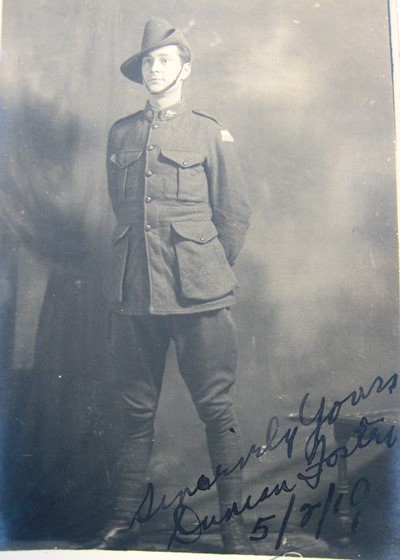
Private Duncan McGlashen Foster, Acc: 30151/3
While researching two young soldiers I was intrigued to discover that they had both enlisted in the A.I.F. (Australian Imperial Force) in the United States, one in New York and the other in San Francisco. The soldiers, Private Duncan McGlashen Foster and Private Keith Waldo Semmens enlisted in October and September 1918 respectively and were both posted to the 6th Draft General Service Reinforcements.
The photographs of these two soldiers are from a small collection of photographic postcards collected by Private George Crigan Graham, of the 42nd Infantry Battalion, during his service in World War I (Accession 30151).
Duncan McGlashen Foster was born in Sydney, New South Wales, and enlisted in New York on October 11th, 1918. He was a 19 year old salesman at the time. His next of kin was his mother, Mrs Margaret Foster who lived in Cleveland, Ohio.
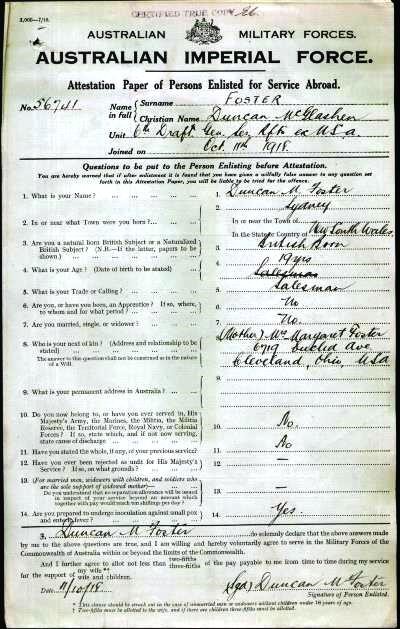
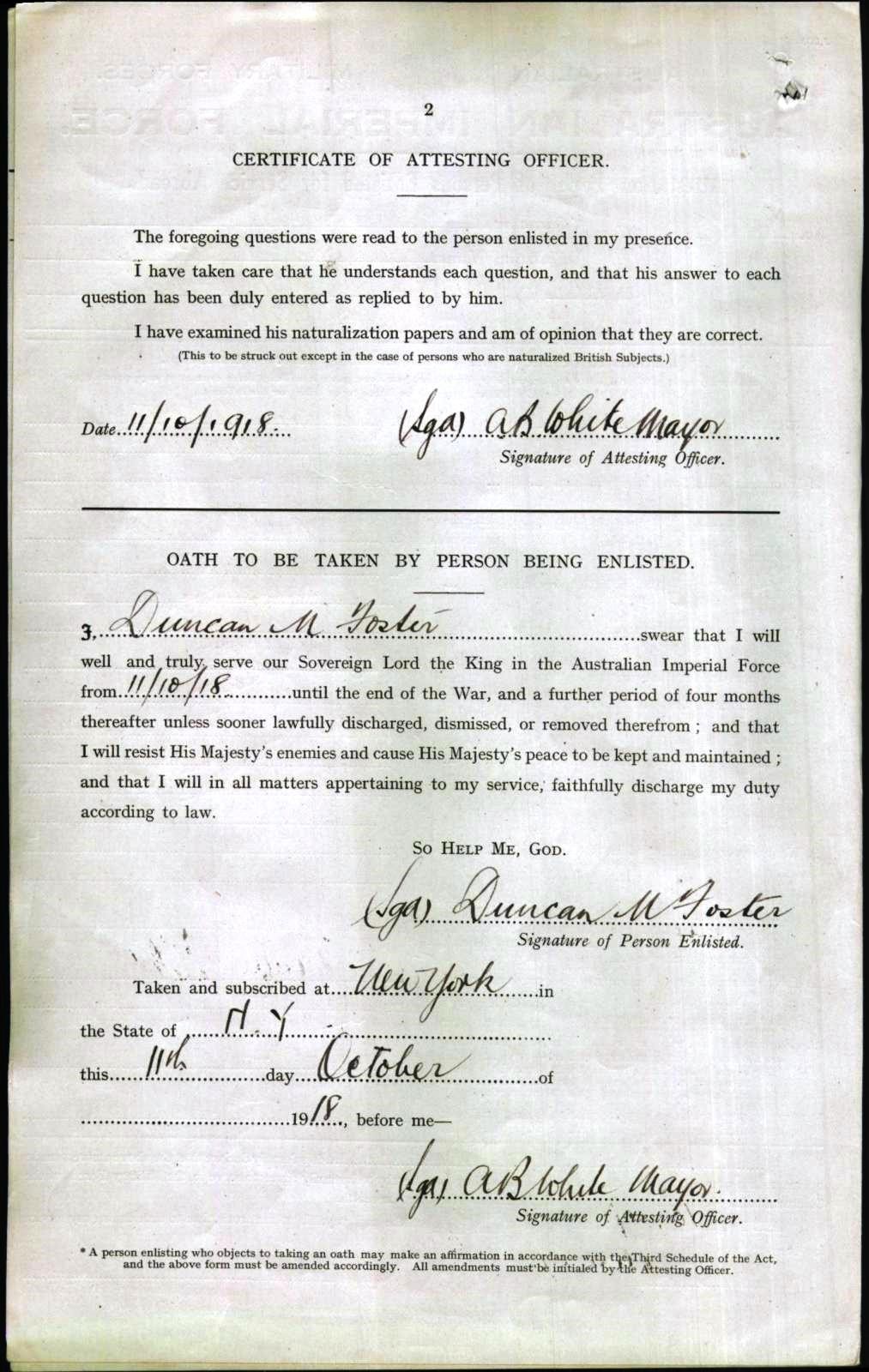
Foster embarked on the troopship Quebec on the 6th November 1918, five days before the Armistice of 11th November. He travelled to England where he trained at Sutton Veney and was posted to the 12th Australian Battalion in February 1919. His war service was short-lived as he returned to America on the S.S. Aquitania on the 6th September 1919 and was discharged from the A.I.F. in October.
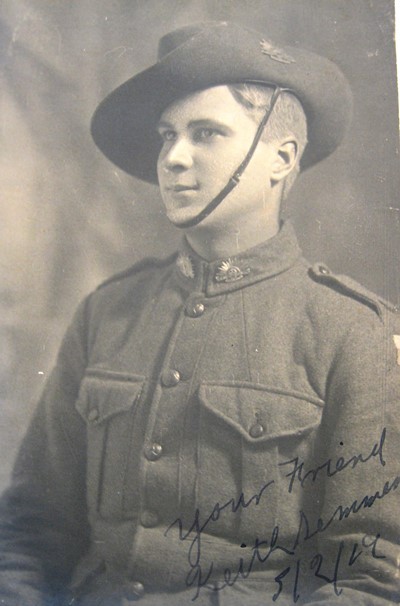
The other young soldier was Keith Waldo Semmens who enlisted in San Francisco on the 23rd September 1918. Semmens was an under-age recruit as he was only 16 at the time of his enlistment. He gave his age as 18. Semmens was born in Malvern, South Australia, on the 10th June 1902. His father, Alfred William Semmens, was a well-known medical doctor and was a Superintendent of sanatoriums in South Australia and New South Wales. The Semmens family were Seventh Day Adventists and Dr. Semmens was a pioneer of the medical work of the church in Australia. In 1911 the family moved to America where Dr. Semmens entered the College of Medical Evangelists at Loma Lind in California.
After his enlistment Waldo travelled to England for training at the Sutton Veney military camp on the Salisbury Plain and was assigned to the 12th Battalion in December 1918. He returned to New York in July 1919 and was discharged from the A.I.F. in August, aged only 17. He lived in America for the rest of his life and died in Sacramento, California on the 23rd June 1984.
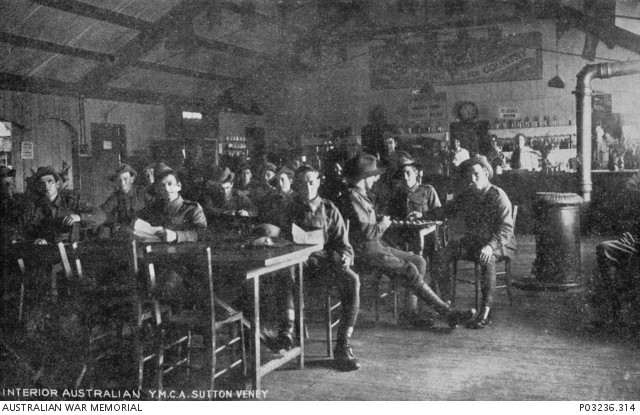
Interior of the Australian Y.M.C.A. hut at Sutton Veney, Wiltshire, England, February 1919. Australian War Memorial Image No. P03236.314
At the outbreak of war in 1914 the Australian Society of America reported that there was a rush of Australians in America to enlist and that within three days of the declaration of war nearly 100 Australians and New Zealanders resident in San Francisco had offered themselves for active service. President Wilson's proclamation of the neutrality of America prevented further enlistments in America, however many Australians joined Canadian contingents while others made their own way directly to Egypt. (Melbourne Age, 5/11/1914, p.8)
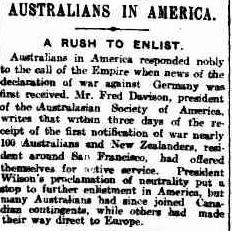
America eventually joined the war on the 6th April 1917 after Germany had resumed all-out submarine warfare on commercial shipping bound for Britain. Many American ships were sunk in the North Atlantic and submarine warfare threatened to stop American trade. This would have had an adverse impact on the economy and possibly led to a recession. In addition public outrage at the actions of Germany was high and America had not forgotten the sinking of the British passenger ship, the Lusitania, on the 7th May 1915, which had killed 148 Americans.
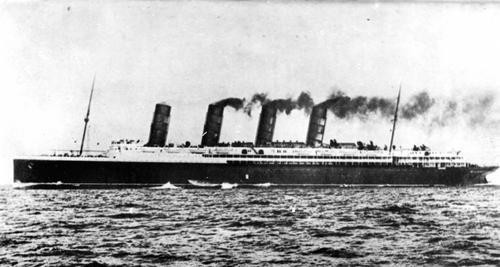
"Lusitania", John Oxley Library, Negative No. 64153.
Unlike Australia which had rejected conscription at two referenda, America relied primarily on conscription, rather than voluntary enlistment, to raise manpower for the war. There was a general public demand that resident aliens from allied countries, including Australia, be included in the American draft. This led to the writing of the "Alien Draft Bill" in 1917, however it was not passed as the State Department feared that it might lead to treaty disputes with allied nations and impel allied countries to conscript resident American citizens.
It would appear, however, that many Australians resident in America, such as Waldo Semmens and Duncan McGlashen Foster, were keen to enlist. When America joined the war, British authorities opened recruiting centres for British subjects, including Australians and New Zealanders, in major cities such as New York and San Francisco. In this way Australians could volunteer for service in the Australian Imperial Force through the British recruiting mission in America. The call of Empire was strong, as was the sense of adventure which drove these two young men to enlist in the last months of the war.
The weary allied troops on the battlefields of France enthusiastically welcomed these fresh troops from America who arrived at the rate of 10,000 a day and played a major role in the allied victory in November 1918. The Americans eventually suffered 110,000 casualties during the war, including 43,000 deaths from influenza.
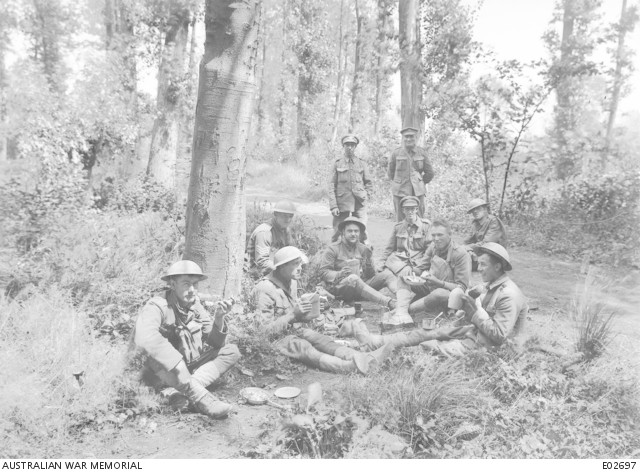
English, American and Australian troops lunching in a wood near Corbie, France, 3 July 1918. Australian War Memorial Image No. E02697
Photographs from the George Crigan Graham Collection, Accession 30151, have been digitised and will shortly appear on our catalogue.
Lynn Meyers, QANZAC100 Content Curator
Comments
Your email address will not be published.
We welcome relevant, respectful comments.